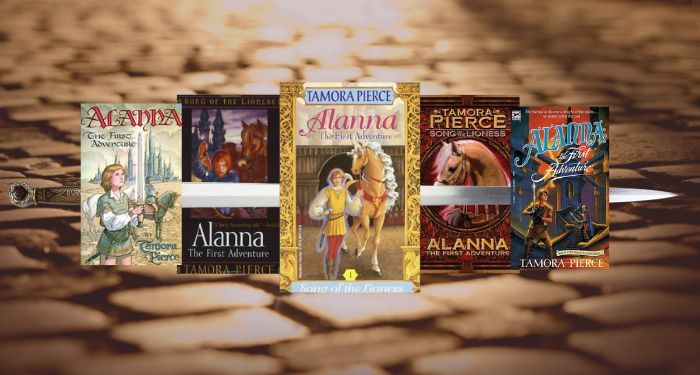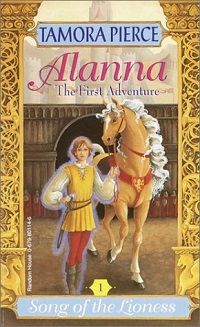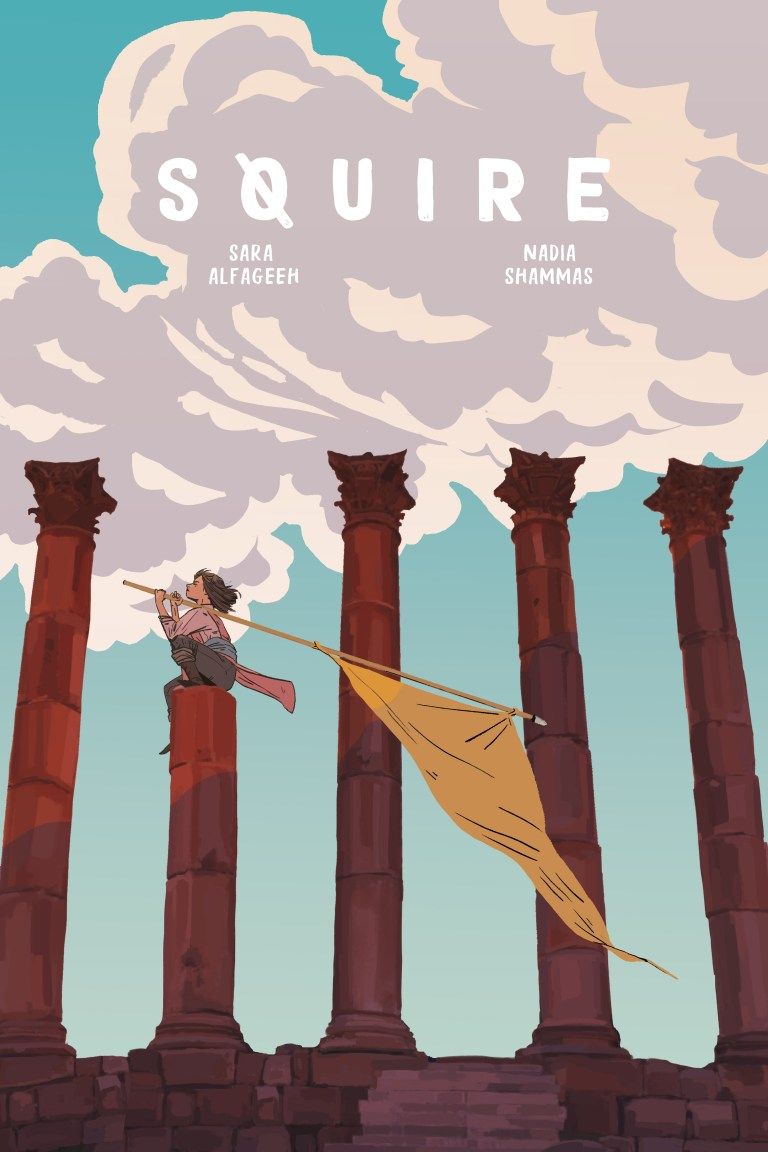
Celebrating 40 Years of Alanna of Tortall
When I was roughly 12 years old, I used to spend long summer hours at my family’s business, located in a boring Midwestern strip mall. We were situated off the highway and there wasn’t anywhere I could walk to, or much to keep my attention nearby, so I often spent my time reading a stack of library books in the employee break room and wandering the sidewalk in front of the handful of other stores — a pizza place, a dollar store, a tanning salon, and other assorted shops that didn’t really appeal much to an almost-teen. This was the early 2000s, and I wasn’t quite connected online and wouldn’t have had access to a computer even if I was, so the summers seemed to stretch on and on.
And then, one day, I discovered that the Hallmark store at the other end of the strip mall had a book section.
It was small, and mostly contained mass market paperbacks, but there was a section specifically devoted to kids and teens, and once I found this source for books, I was begging anyone who’d listen for books. My grandmother, tired of me interrupting her work day, finally caved and handed me a ten dollar bill. The first book I bought was Alanna: The First Adventure by Tamora Pierce. I tore through it, and then went back to my grandmother begging for the next three books in the series, which she graciously obliged. Of all the things that my grandmother ever gave me in her lifetime, I don’t think she realized that buying me those four mass market paperbacks was probably the most impactful gift.
For the uninitiated, the Song of the Lioness Quartet follows Alanna of Trebond, who is about 11 at the start of the series. She desperately wants to become a knight despite the fact that she is a girl and it Simply Isn’t Done. Her twin brother Thom is expected to become the knight, while she is to be sent to the cloisters to learn how to become a lady. With the help of two loyal family servants, Thom and Alanna switch places so that Thom can go learn how to become a mage in the cloisters and Alanna can go to court as her brother. She spends roughly the next seven years masquerading as a boy and training her hardest, forging unexpected alliances in court and in the capital city, and making a few enemies, too. Along the way, she learns she’s been chosen by the gods for a special destiny.
The first two books, Alanna: The First Adventure and In the Hands of the Goddess, cover Alanna’s years as a page, then squire, in the king’s court. The Woman Who Rides Like a Man and Lioness Rampant follow Alanna’s first years as a knight, traveling the continent and facing dangers, prophecies, enemies at home and abroad, and helping people in need. Not only are they great stories, but these books deal with issues that, looking back, I saw rarely in the contemporary books I read at the time, let alone the fantasy ones: getting your period, healthy relationships (both romantic and platonic), forging your identity when you don’t fit into society’s expectations, and having sex for the first time. They also feature lovely coming-of-age storylines and are about the importance of following your path and standing up for what you believe in and those you care about, and forging a found family. What particularly resonated with me was Alanna’s desire to be a knight, no matter what it took. But despite years pretending to be a boy, as she matures she realizes that while she might have wished to be born a boy because of the opportunities afforded to them, she also likes being a woman, and wants to indulge in feminine things as well. What I took from that was that girls can be tough, capable, and strong — but they can also be soft and feminine. Alanna didn’t have to choose, and as the series progresses, she holds fiercely to her independence, valuing it more than personal gain or even romance with a man she loves.
I won’t pretend that the books are perfect — they were written throughout the 1970s and published in the 1980s, and in some ways they show their age. I have some thoughts about the age differences between Alanna and two of her love interests, and The Woman Who Rides Like a Man, in particular, feels a little clunky as it explores Alanna’s time with the Bahzir, a conquered people who live in the desert of Tortall and do not recognize the king. Alanna finds herself spending months with them as she takes over the magical training of three young people of the tribe, and she doesn’t always have the most progressive views on femininity and identity. She does evolve over time, and in the afterword of the 2014 edition, Tamora Pierce reflects on her inspiration and her own struggles with understanding feminism as being inclusive beyond her own initial understanding. She acknowledges that her intent was never to cause offense, but hints at the ways her thinking has evolved since drafting the book 40 years ago. I recommend picking up Squire by Sara Alfageeh and Nadia Shammas, an excellent YA graphic novel, for an updated look at fantasy knighthood and colonialism.
While so much about the world has changed in the 40 years since Alanna: The First Adventure was published, I think Alanna’s story still resonates with so many people, and not just the Gen X and Millennial readers who first read these adventures. Here is a heroine who forges her own path, who has faults and petty grievances, who wants the whole world. She doesn’t always get what she wants, but she always stays true to who she is. Alanna helped usher in a whole new era of strong women in fantasy who were more than princesses or maidens in distress, and who helped define the idea of a strong female protagonist as someone who doesn’t just wield a sword, but who is emotionally vulnerable as she holds fast to her convictions. I’m so thankful that my grandma gave me the gift of Alanna of Tortall 20 years ago, and while we are fortunate to have so many more amazing YA fantasy books starring strong young women, I hope that Alanna of Tortall will still be around for at least another 40 years.
Want to explore the Tortall universe? Here’s where to start.













